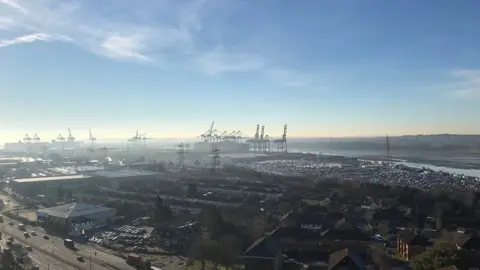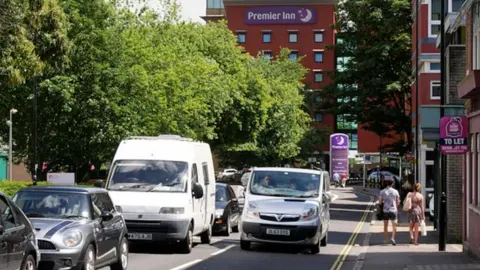Southampton city centre traffic-free zone plans approved
 Southampton City Council
Southampton City CouncilPlans to turn part of Southampton city centre into a traffic-free zone have been approved.
New Road, Above Bar Street and Portland Terrace are expected to be closed to through traffic as early as September, following approval by Southampton City Council's cabinet.
The three roads will remain open to taxis, buses and cyclists, to try to encourage sustainable travel.
A public consultation is expected to be held while the scheme is trialled.
The move is part of a £4.1m "Green Transport Recovery Plan" for the city.
 David Dixon
David DixonRoad closures and other measures could also be put in place at Devonshire Road, Cumberland Place, London Road, Bellvue Road and Civic Centre Road.
Further details, including a start date, are yet to be revealed but according to official documents they could be rolled out by September, according to the Local Democracy Reporting Service (LDRS).
A number of pop-up cycle and bus lanes are currently being trialled across the city, including on Bassett Avenue, The Avenue, Hill Lane and Bitterne Road West.
'Healthier city'
Steve Leggett, the council's cabinet member for environment, described the Green Transport Recovery Plan as a "unique opportunity" to build on the initiatives implemented over the past two years in a bid to tackle pollution.
He said active travel had "significantly increased" in the city during lockdown.
"All of the measures in the plan will also support our long-term vision for a greener and healthier city," he added.
Southampton was among five cities the government called on to establish clean air zones along with Leeds, Birmingham, Nottingham and Derby.
In May 2018, the city was named by the World Health Organization as being at the limit for levels of fine-particle pollution.
